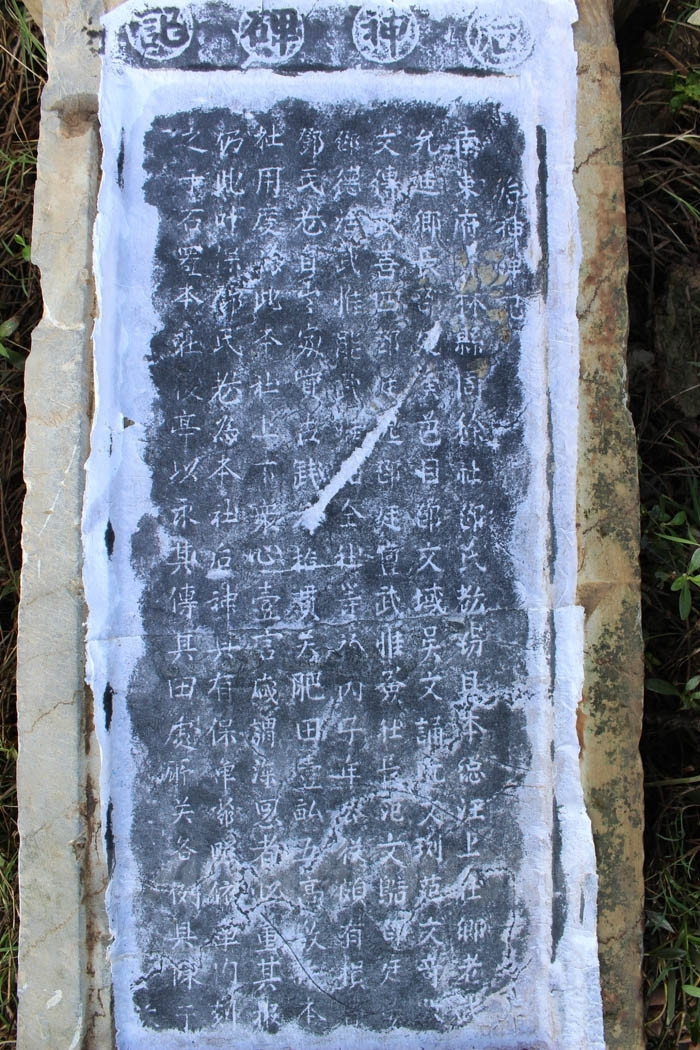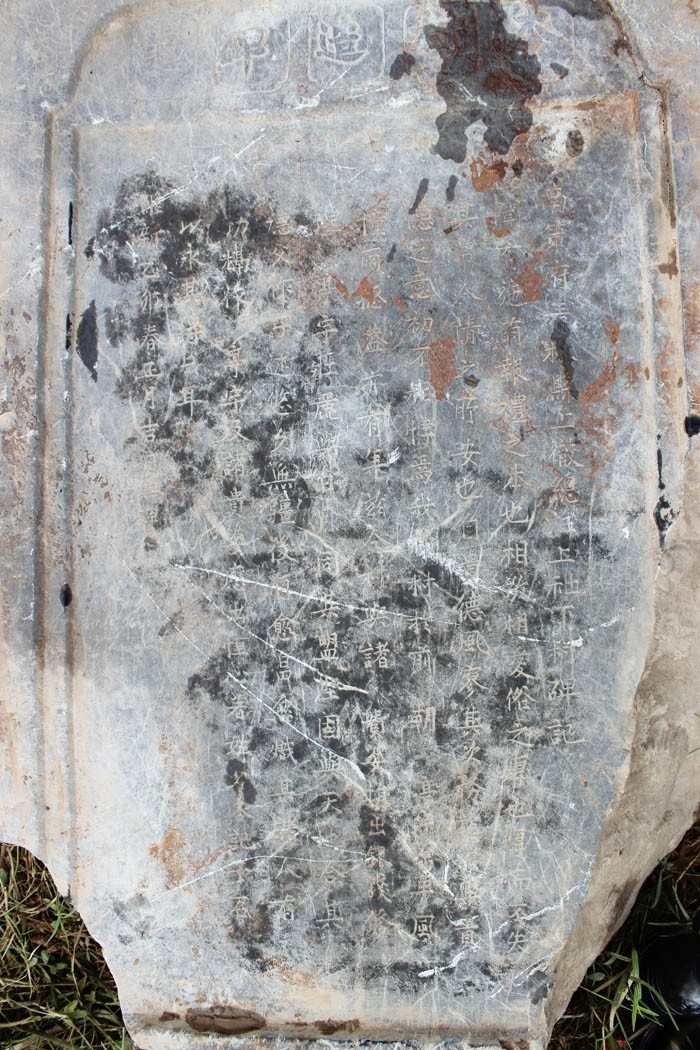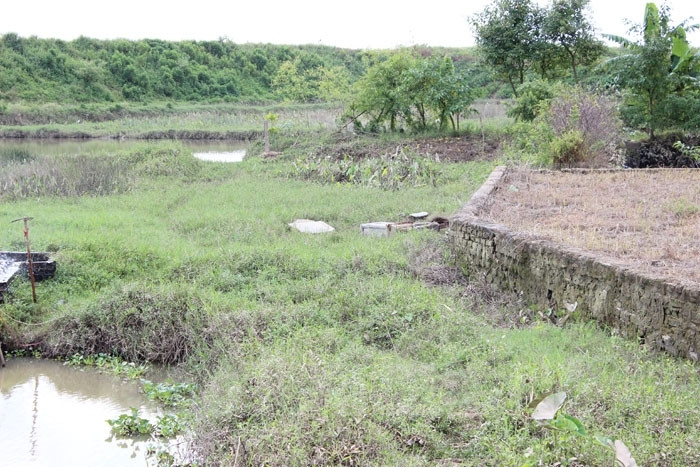Two stone steles in My Xa hamlet, Minh Tan commune, Hai Duong province's Nam Sach district, are from more than 100 to more than 200 years old.

Hau Than Bi Ky stele dates from the 17th Gia Long year (1818)
During a survey with the Institute of Archeology to carry out the project "Surveying ceramic and porcelain production relics in Hai Duong" (the 15th century), the provincial Museum's Research - Collection Department found two stone steles in My Xa hamlet, Minh Tan commune, Nam Sach district.
In April 2013, Vuong Van Chuat's family detected the two steles at a depth of 115 cm when digging a pond.
The first stele, Hau Than Bi Ky, dates from the 6th month of the 17th Gia Long year (1818). The four-side stele is made of green stone, 115 cm high, 42 cm wide, and 29 cm thick. Engraved on it are about 400 characters in regular script. The stele's forehead and edging are undecorated. The stele is fairly intact, only a few characters are blurred.
Inscriptions on the stele say: "Thanh Lam district, Nam Sach phu (an administrative unit more important than a district in the old days).
"Villagers from top to bottom included village elder Vu (Vo) Sung Dich, village chief Dang Danh Hy, sub-hamlet chiefs Dang Van Vuc, Ngo Van Tung, Nguyen Van Duy, Pham Van Ky, Doan Van Truyen, Vo (Vu) Thien Tu, Dang Dinh (?), and Dang Dinh Dan.
"Commune chiefs Pham Van Hoc, Dang Duc Co, and Vu Duy Nang and the entire commune donated money and fields to repair the communal house in Binh Ty year.

Ban Thon Tao Bi Ky stele dates back to Duy Tan year (1907)
"Among them, Dang Thi Lao contributed 30 quan (an ancient monetary unit of Vietnam) and one mau (3,600 m²) and five sao (360 m²) of fields.
"Later, the meritorious people were awarded the title Hau Than (meritorious people who are worshiped together with a god), and the stele was built for recording and transmission for eternity."
On every death anniversary of hundred-year-old gods, the commune must include pigs (weighing one quintal each) among offerings, which were taken to the worship hall where mandarins performed the ceremony, followed by heads of clans under the witness of heaven and earth to pray for peace.
The second stele, Ban Thon Tao Bi Ky, records the hamlet's repair of the communal house. It dates back to the 1st month of At Mao year (Duy Tan year – 1907).
The two-side flat stele is made of green stone, 100 cm high, 60 cm wide, and 20 cm thick with a vaulted roof.

The location where the two steles were found
Carved on the stele are about 500 characters in regular script; its forehead is decorated with patterns of two dragons flanking the moon, flamed knives, and spiral clouds; and its edging is smooth. At present, the corners of the right and left legs are broken, and some characters are blurred.
The stele's inscriptions say: "Uong Ha commune, Thuong Triet tong (an intermediary administrative unit between a district and a commune), Thanh Lam district, Nam Sach phu. Ha hamlet set up the stele for recording.
"Previously, the communal house in our hamlet was overgrown with grass and inundated during the rainy season. However, it is an annual gathering place, so everyone in the hamlet and wealthy ladies spent money repairing and making the communal house more solemn. After finishing, everyone offered sacrifices to the god together...
"Later, to remember those having the merit of building the communal house and the kind-hearted ladies, their names were recorded on the back of the stele for future generations to know."
Through the contents of the two steles, we can know about the attention of people from all walks of life to donation to repair the communal house, contributing to preserving the local heritage values.
PHUONG LAN – HOANG HUONG